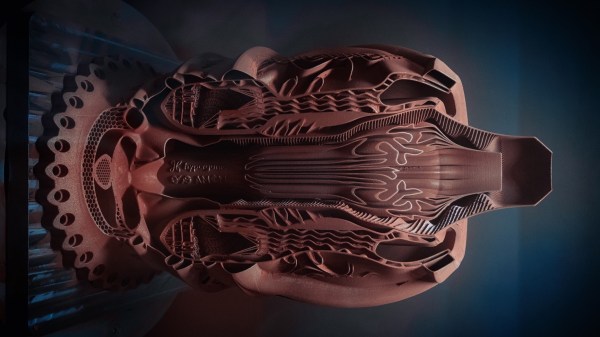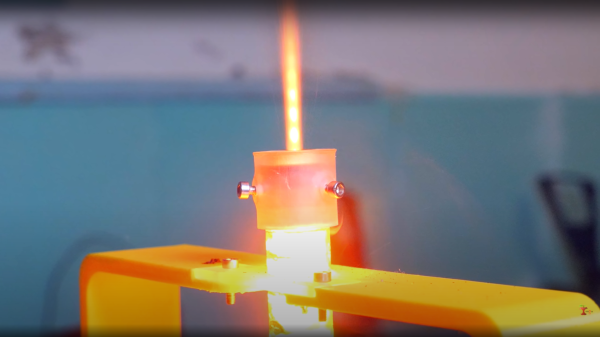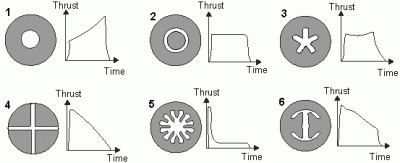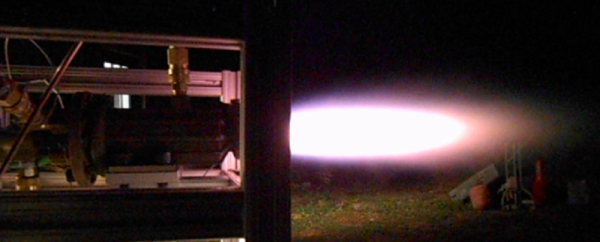We’re still in the early days of generatively-designed objects, but when combined with the capabilities of 3D printing, we’re already seeing some interesting results. One example is this new copper aerospike engine. [via Fabbaloo]
A collaboration between startups Hyperganic (generative AI CAD) and AMCM (additive manufacturing), this 800 mm long aerospike engine may be the most complicated 3D print yet. It continues the exciting work being done with 3D printing for aerospace applications. The complicated geometries of rocket nozzles of any type let additive manufacturing really shine, so the combination of generative algorithms and 3D printed nozzles could result in some big leaps in coming years.
Aerospikes are interesting as their geometry isn’t pressure dependent like more typical bell-shaped rocket nozzles meaning you only need one engine for your entire flight profile instead of the traditional switching mid-flight. A linear aerospike engine was one of the main selling points for the cancelled VentureStar Space Shuttle replacement.
This isn’t the only generative design headed to space, and we’ve covered a few projects if you’re interested in building your own 3D printed rocket nozzles or aerospike engines. Just make sure you get clearance from your local aviation regulator before your project goes to space!















